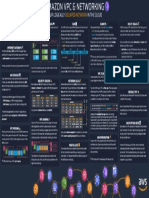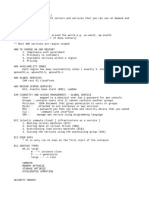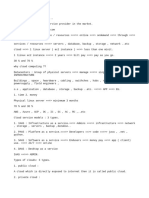0% found this document useful (0 votes)
13 views42 pagesS Aws
The document provides an overview of various AWS services, including instance types, IAM roles, networking concepts like CIDR and NAT gateways, and VPC configurations. It explains the differences between public and private subnets, security groups, and the use of VPC endpoints for secure connections to AWS services. Additionally, it covers VPN connections, AWS Transit Gateway, and storage solutions like Amazon EBS and EFS.
Uploaded by
shyamraoyakkeliCopyright
© © All Rights Reserved
We take content rights seriously. If you suspect this is your content, claim it here.
Available Formats
Download as DOCX, PDF, TXT or read online on Scribd
0% found this document useful (0 votes)
13 views42 pagesS Aws
The document provides an overview of various AWS services, including instance types, IAM roles, networking concepts like CIDR and NAT gateways, and VPC configurations. It explains the differences between public and private subnets, security groups, and the use of VPC endpoints for secure connections to AWS services. Additionally, it covers VPN connections, AWS Transit Gateway, and storage solutions like Amazon EBS and EFS.
Uploaded by
shyamraoyakkeliCopyright
© © All Rights Reserved
We take content rights seriously. If you suspect this is your content, claim it here.
Available Formats
Download as DOCX, PDF, TXT or read online on Scribd
/ 42































































































